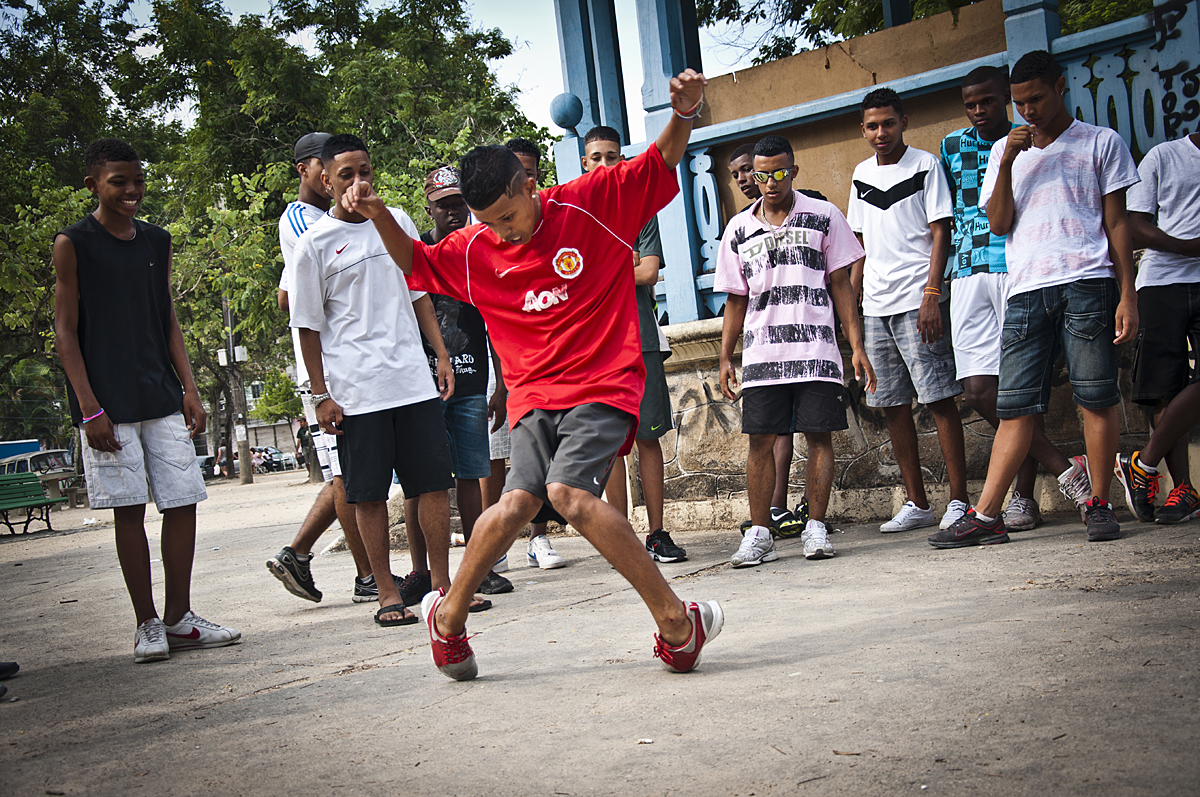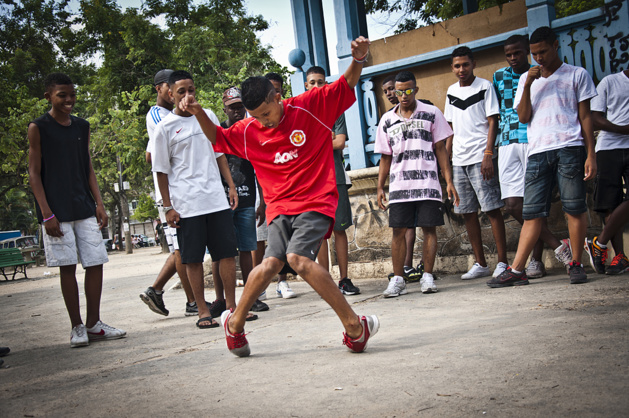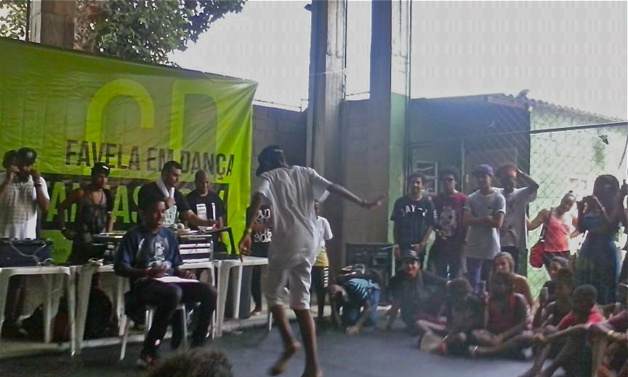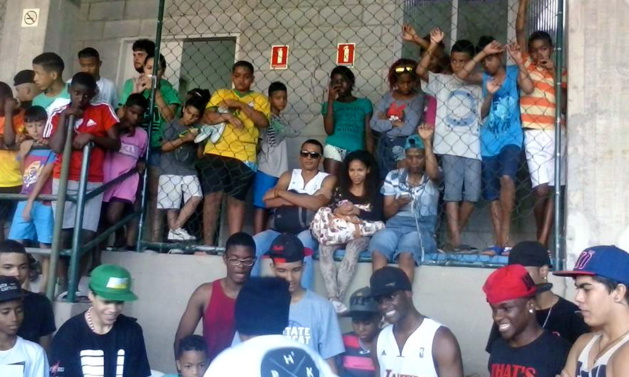The event, totally free, was targeted at professional dancers as well as amateurs and also at those who were simply curious. The idea was to raise interest and get the young people of the slums to participate in the art, while mixing local and foreign dances. The cocktail was successful : hip-hop, krump, breakdance and passinho (a local dance) were on non-stop from morning until late at night.
A contest for every dance
At ten o’clock in the morning, at the official opening time of the festival, about a dozen dancers were already on the dance floor, getting warmed up to the beat of the biggest hip hop classics, while the neighbourhood children observed. At the entrance of the building, the future participants waited in line to sign up for dance battles open to everyone.
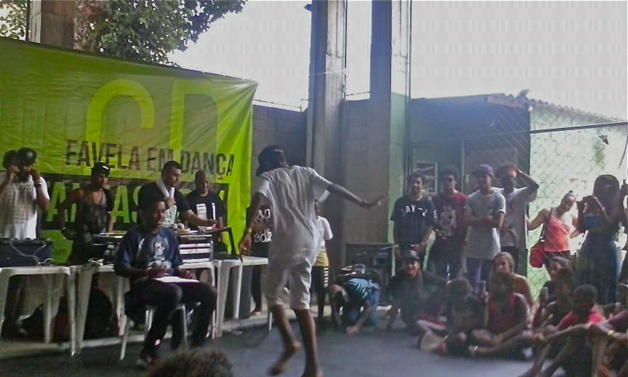
Crédit Laetitia Rossi
One hour later, with warmed-up dancers and a hall full of people, the pre-selection was starting. Passinho set the ball rolling. This slum-born dance, inspired by funk carioca- ‘originally from Rio’ – has been a success in the whole town since a video of a group of youths called Passinho Foda was posted to Youtube in 2008. There were about 20 participants in the first stage of the competition, most of whom were kids, barefoot, and breathtakingly agile. The youngest participant was 4 years old, and already a true dancer, with the rhythm in the blood, and attitude. The crowd was in a frenzy. The jury chose 8 people amongst the 20 competitors to continue to the next stage, the batalhas – the battles.
Then it was time for a krump round : both the dancers and the crowd had gone wild. This dance, created in the working-class districts of Los Angeles in the 90s, is non-violent, despite seemingly aggressive movements and a frenzied look on the dancers’ faces, and it electrifies the air. This electrifying sensation intensified to such a point that it caused a shrinking effect on the audience : the crowd was unable to stay passive with all the energy around them, and people started getting closer to the dancers. When the results of the pre-selection had been announced by the jury, krump made room for its cousin, breakdance, on the stage.
This dance style created in New York in the 90s’, characterized by its acrobatics and moves on the ground, has lots of fans in Rio. Most of the competitors were men in their 20s. Bulging muscles made their bodies look as if they were carved in stone – which is not surprising, considering the height and speed of the acrobatics that prompted many exclamations and frenetic applause.
A social dimension
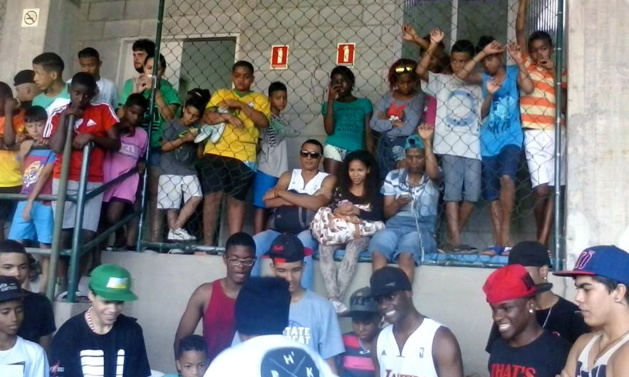
Crédit Laëtitia Sirop
In the early afternoon there was a debate led by Rodrigo Pires Soninho, a professional hip-hop dancer and teacher, Sônia Destri, director of the group Companhia Urbana de Dança and mediator, and Ingrid de Carvalho, a member of the Favela em Dança organization. The following themes were discussed in the public debate : the social issues of art, especially when it comes to dance in disadvantaged communities, dance as a profession, and the possibilities of obtaining government funding for dance groups and events.
Barbara Lima, a renowned dancer in Rio, made an interesting point : “I am a dancer, what I’m selling is dance, and only dance, but not necessarily popular dance. It doesn’t matter if I come from a disadvantaged area, from a slum or from the north of Rio, I am first and foremost a dancer. Aren’t you afraid that, by highlighting our origins we make people see us first and foremost as the poor, rather than as dancers ? Is that something you would like to change ?”
That is when Sônia Destri took the microphone and explained that the urban dances are quite a new phenomenon in Brazil, and that even if in Europe and in the United States – thanks to their longer presence on these continents - they are today less associated with disadvantaged communities than before, in Brazil this is still an ongoing process. Her voice full of emotion and tears in her eyes, she added : “And you know, what you have managed to do is very beautiful, it is something to be proud of. To keep in mind where you come from does not take away anything about who you are”.
Following the undeniable success this year, the 3rd edition of Favela em Dança will take place in 2015.














